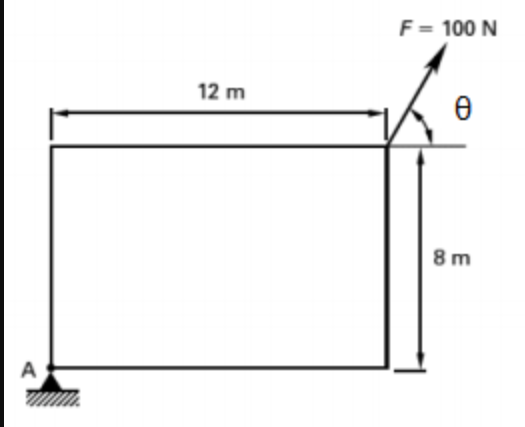FREE NCEES Engineering General Questions and Answers
What is the name for the stress to strain ratio that is lower than the proportional limit?
Explanation:
Young’s modulus (also known as the modulus of elasticity) is the term for the ratio of stress to strain below the proportional limit. It is denoted by the symbol E and is defined as the ratio of stress (force per unit area) to strain (change in dimension relative to the original dimension) in a material.
What angle, for the following frame depicted most approximately, would guarantee that the frame is in equilibrium?

The same thing as 18,000 watts is
Explanation:
Watts (W) is a unit of power. It represents the rate at which energy is used or produced.
The term for electrons in the outer orbit is
Explanation:
Valence electrons play a crucial role in determining an atom's chemical properties, including its ability to form chemical bonds and participate in chemical reactions. So, the correct term for electrons in the outer orbit is "valences".
A two-terminal variable resistor is what a potentiometer is.
Explanation:
A potentiometer is a three-terminal device. It has a fixed resistance between its two outer terminals and a sliding contact (wiper) that can be moved along a resistive track. This allows for a variable resistance between one of the outer terminals and the wiper. So, a potentiometer is a three-terminal variable resistor, not a two-terminal one.
13.63 mA is detected when a 12 V battery is connected in series with four resistors of equal value. Each resistor's value is
Explanation:
Total Resistance, r = 12 / 13.63
= 0.880 in ohms
Total Resistance, r= 880
Each resistance value = r/4
= 880/4
Each resistance value = 220 ohms.
A 1/8 W resistor, a 1/4 W resistor, and a 1/2 W resistor make up a specific series circuit. 1200 people are resisting in all. If each resistor in the circuit is working at its maximum power dissipation, total current flow is
Explanation:
Total P = P1 + P2 + P3 = 7/8w.
P = I^2R.
I = sqrt (P/R)
Now, P = 7/8w, R = 1200 ohm.
Therefore,
I= sqrt ( (7/8)/1200 ) = 0.0270030862 = 27 mA.
Advertisement
A parallel circuit acts as a current divider.
Explanation:
The correct answer is True. A parallel circuit acts as a current divider because the total current from the source splits into different paths or branches according to the resistances of each branch. The current through each branch is inversely proportional to its resistance, meaning that the branch with the lowest resistance will have the highest current, and vice versa. This is explained by the current divider formula, which relates the branch current to the total current and the resistances of the parallel circuit .
Electricity delivered to the secondary load is 25 W if 25 W of power are applied to the primary of an ideal transformer with a turns ratio of 10.
Explanation:
The correct answer is 25 W. In an ideal transformer, the output power is equal to the input power, since there are no losses in the transformer. This means that the power delivered to the secondary load is the same as the power applied to the primary.
What is the coupling coefficient for a transformer in which the secondary does not receive 4% of the total flux generated in the primary?
Explanation:
The correct answer is 0.96. The coefficient of coupling (K) is the fraction of the total flux generated in the primary coil that links with the secondary coil. It is a measure of how well the coils are magnetically coupled, and it ranges from 0 to 1. If K=0, there is no magnetic coupling between the coils, and if K=1, there is perfect magnetic coupling between the coils.
When is it acceptable for a certified engineer to sign and seal blueprints or legal papers that they did not create?
Explanation:
In many engineering jurisdictions and professional codes of conduct, a registered engineer may sign and seal plans or documents that were prepared by someone else under their direct supervision and guidance. This practice acknowledges the responsibility of the registered engineer for the work that was carried out under their supervision.